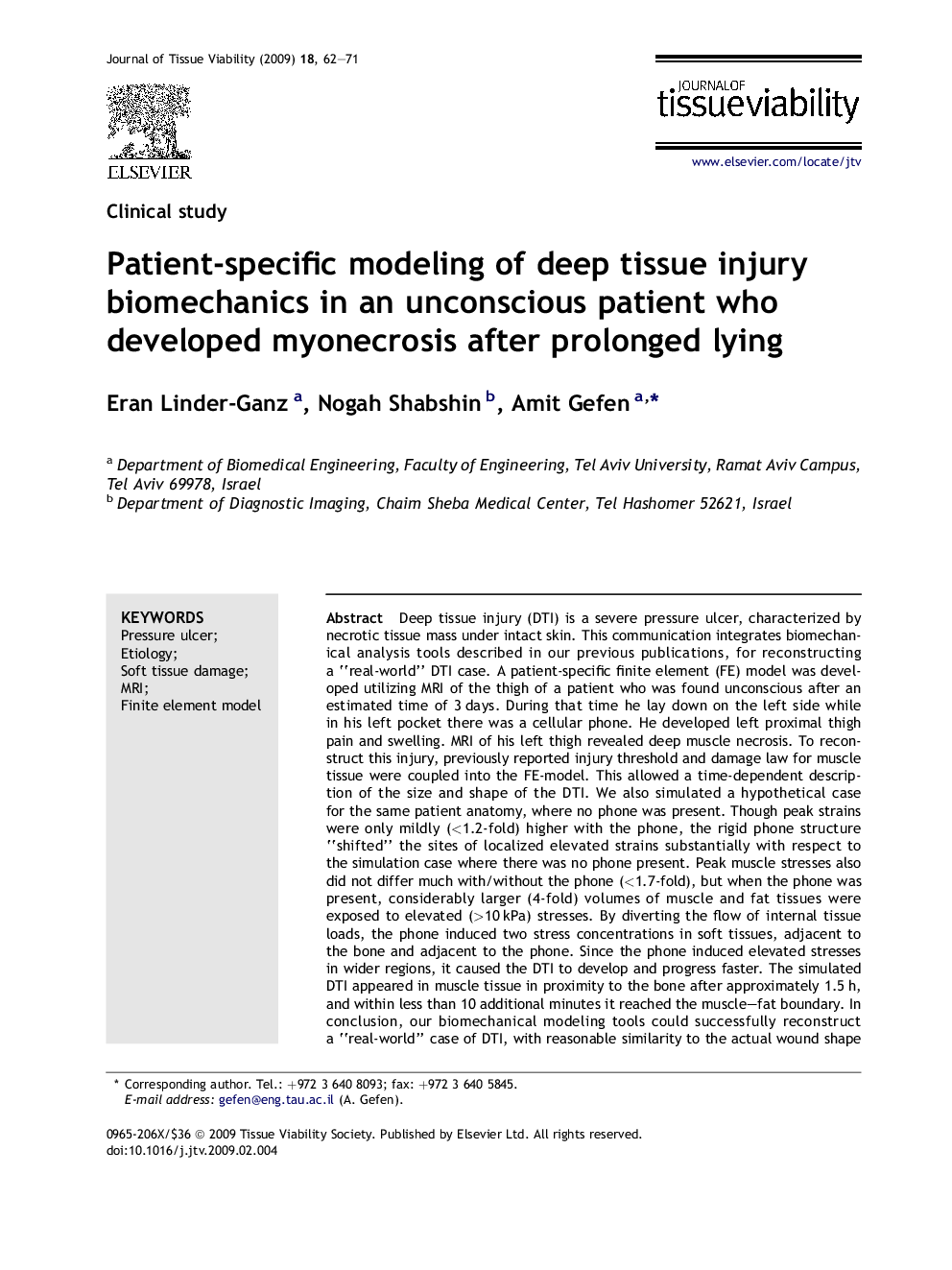| کد مقاله | کد نشریه | سال انتشار | مقاله انگلیسی | نسخه تمام متن |
|---|---|---|---|---|
| 2674062 | 1141649 | 2009 | 10 صفحه PDF | دانلود رایگان |

Deep tissue injury (DTI) is a severe pressure ulcer, characterized by necrotic tissue mass under intact skin. This communication integrates biomechanical analysis tools described in our previous publications, for reconstructing a “real-world” DTI case. A patient-specific finite element (FE) model was developed utilizing MRI of the thigh of a patient who was found unconscious after an estimated time of 3 days. During that time he lay down on the left side while in his left pocket there was a cellular phone. He developed left proximal thigh pain and swelling. MRI of his left thigh revealed deep muscle necrosis. To reconstruct this injury, previously reported injury threshold and damage law for muscle tissue were coupled into the FE-model. This allowed a time-dependent description of the size and shape of the DTI. We also simulated a hypothetical case for the same patient anatomy, where no phone was present. Though peak strains were only mildly (<1.2-fold) higher with the phone, the rigid phone structure “shifted” the sites of localized elevated strains substantially with respect to the simulation case where there was no phone present. Peak muscle stresses also did not differ much with/without the phone (<1.7-fold), but when the phone was present, considerably larger (4-fold) volumes of muscle and fat tissues were exposed to elevated (>10 kPa) stresses. By diverting the flow of internal tissue loads, the phone induced two stress concentrations in soft tissues, adjacent to the bone and adjacent to the phone. Since the phone induced elevated stresses in wider regions, it caused the DTI to develop and progress faster. The simulated DTI appeared in muscle tissue in proximity to the bone after approximately 1.5 h, and within less than 10 additional minutes it reached the muscle–fat boundary. In conclusion, our biomechanical modeling tools could successfully reconstruct a “real-world” case of DTI, with reasonable similarity to the actual wound shape seen in the MRI. This case study also indicates that although both strain and stress measures can be considered adequate predictors of DTI, tissue stresses appear to perform better than strains.
Journal: Journal of Tissue Viability - Volume 18, Issue 3, August 2009, Pages 62–71